 Why yes, please. I’d love that with some ice cream.
Why yes, please. I’d love that with some ice cream.
That’s what happens when you live here too long. Silly little things turn into abstract bi-lingualisms that are funny to one and no one else. The ultimate inside joke.
 A craving for frozen sugar & fat isn’t what’s put me in such a giddy mood, it’s fashion! Yesterday, I headed to the Art Deco-glorious Palais de la Porte Dorée Musée de l’Histoire de l’Immigration, which is a really long name for a very cool museum on immigration to France. They’ve got artifacts and fish. Yes fish. Because there is an aquarium, too. We didn’t have time to visit it, but my museum date, Karen, started wondering if maybe the fish were all imported, making them immigrants of a sort, too.
A craving for frozen sugar & fat isn’t what’s put me in such a giddy mood, it’s fashion! Yesterday, I headed to the Art Deco-glorious Palais de la Porte Dorée Musée de l’Histoire de l’Immigration, which is a really long name for a very cool museum on immigration to France. They’ve got artifacts and fish. Yes fish. Because there is an aquarium, too. We didn’t have time to visit it, but my museum date, Karen, started wondering if maybe the fish were all imported, making them immigrants of a sort, too.
We were at the musée to see their latest show, Fashion Mix; local fashion from foreign designers.
Lately, pundits are bemoaning that French ingenuity is dying, or has emigrated to London (the French are calling it the second largest city in France which is funny/tragic on so many levels…). Financial crisis, Charlie Hebdo, an extended “Sales” Season. Paris is going through a time of Existential Angst. But then the pundits site the fashion industry, naming all the foreign designers leading the great French Fashion houses; Lagerfeld at Chanel, Elbaz at Lanvin, Simons at Dior, Slimane at YSL…. the list does seem to get depressingly long very quickly. We’re doomed!
Fashion Mix sets that logic on it’s ear, celebrating the art and creativity brought to French fashion houses since fashion went retail. The show starts with a reminder that the man who first took dressmaking from the lower classes and made it high class was Charles Worth. Vurt? A Frenchman would pronounce, awkwardly. It is rather a mouthful for a Français, because Mister Worth was très, très anglais.
Mr Worth was in Paris working for drapers, but made dresses for his co-worker/wife on the side. Clients would see her gorgeous garb and ask for one of their own. Their French bosses were not impressed and didn’t think it was a very good idea when Worth suggested they go into dress making, so he found a Swedish investor, started dressing Princess Eugènie and a multi-billion dollar, Parisian industry was born.They show Elsa Schiaparelli’s request for citizenship, Cristobàl Balenciaga’s official Basque documents, passports, and papers from designers that have flooded French fashion from Europe, Asia and Africa.
The show goes on to display all the great French fashion designed by passionate Francophiles. It is the ultimate cocktail party with Comme des Garçons dancing by Ann Demeulemeester, Jean Dessès taking a spin by Mariano Fortuny. Old mixes with new, the traditionally staid with the avant garde.
After the show, we’d planned on finding a charming café nearby for some serious girl time, but the Palais was so 1930’s beautiful with mosaic floors and mural dressed walls, we didn’t want to leave. And we didn’t have to because they have a perfect little salon with an excellent tea by Thé des Ecrivains. Sat there chatting, watch the snow flutter by, dreaming of the summer when we’ll be back to appreciate their lovely terrace, over looking the entrance to the Bois de Vincennes.
The party goes on until May 31st, so if you happen to be in Paris, put on your party shoes and cha cha out to the surprising Palais at the Porte Dorée.

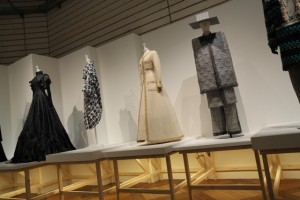
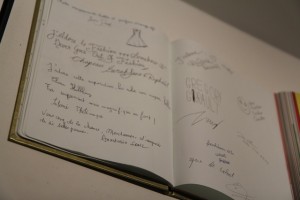
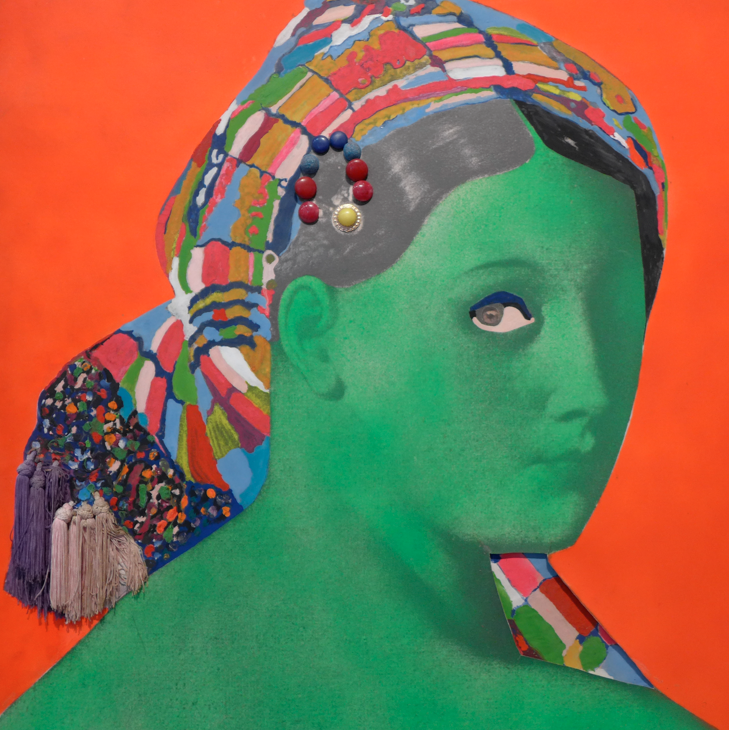
 started collaborating with its thriving ceramics industry. Jean Cocteau was dran to the area, which is how he met Raysse. The two did a joint show together in 1958, when Raysse was only 22.
started collaborating with its thriving ceramics industry. Jean Cocteau was dran to the area, which is how he met Raysse. The two did a joint show together in 1958, when Raysse was only 22.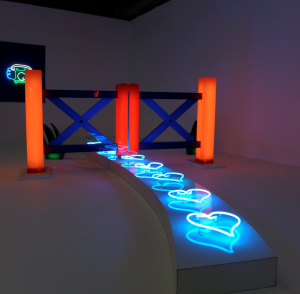 Their concept was “the poetic recycling of reality.” If you now the work of these artists, then Raysse draws on color as the primary source of power for his work.
Their concept was “the poetic recycling of reality.” If you now the work of these artists, then Raysse draws on color as the primary source of power for his work.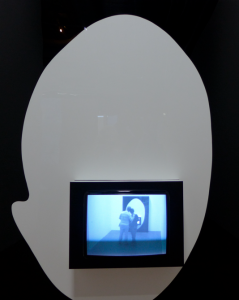
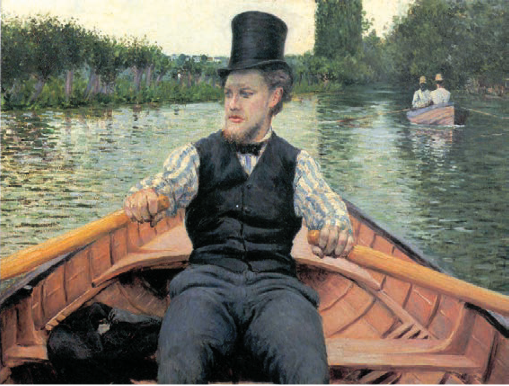
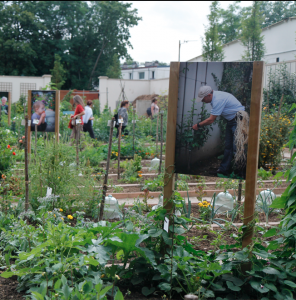
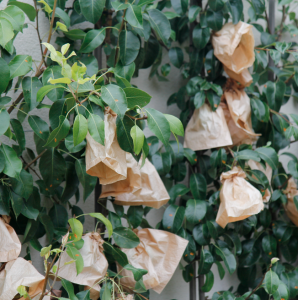

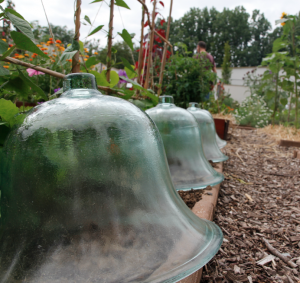
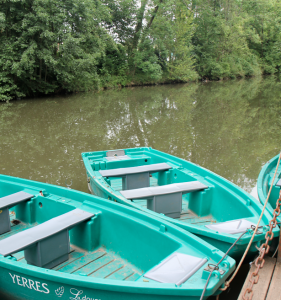
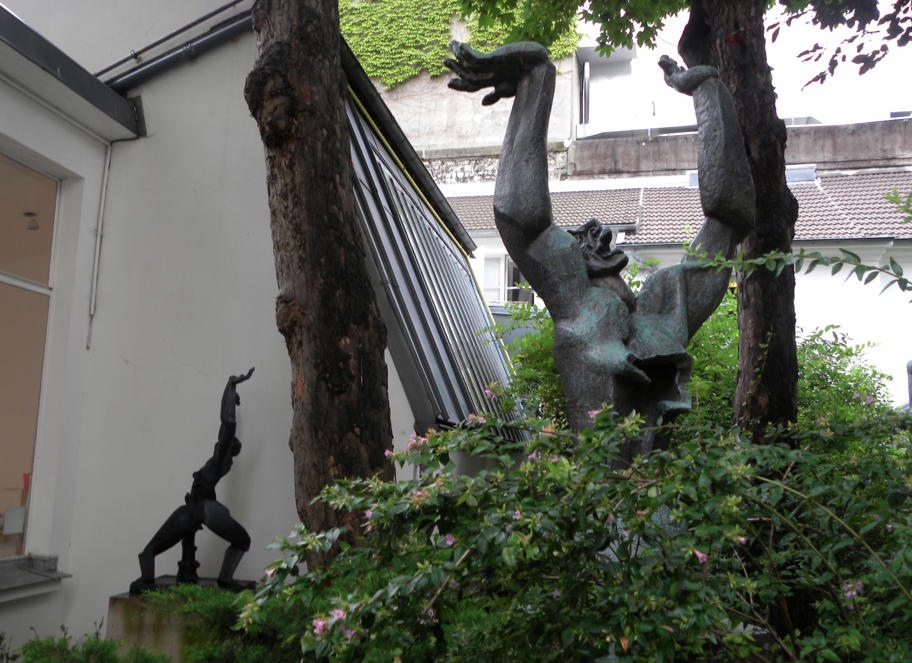
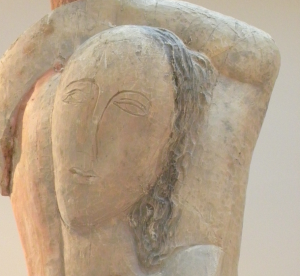

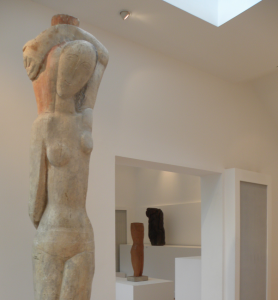 I found the larger-than-life sculptures particularly interesting : “Torso of the Destroyed City” in bronze visible in the garden, “Rebecca” or “Big Water Carrier” crafted in plaster displayed in Room 2, and “Prometheus” sculpted in elm, housed in the garden workshop. Visitors can actually walk all the way around each of these works to admire the detail.
I found the larger-than-life sculptures particularly interesting : “Torso of the Destroyed City” in bronze visible in the garden, “Rebecca” or “Big Water Carrier” crafted in plaster displayed in Room 2, and “Prometheus” sculpted in elm, housed in the garden workshop. Visitors can actually walk all the way around each of these works to admire the detail.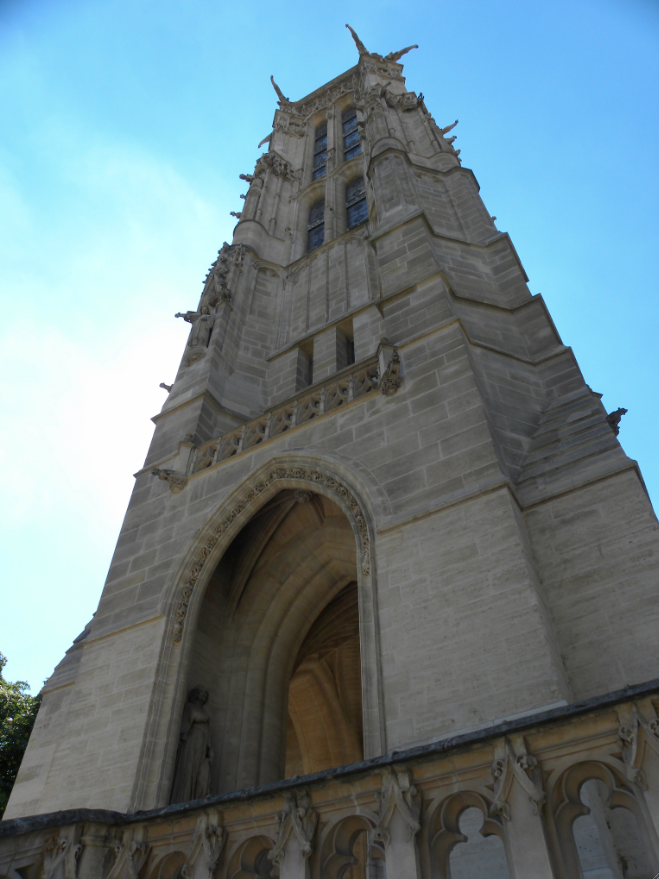
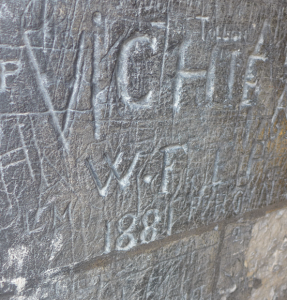

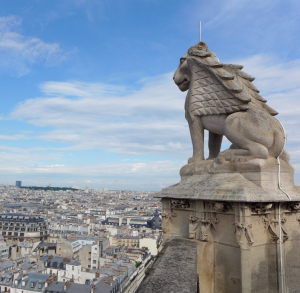 The Tour Saint Jacques is a Flamboyant Gothic bell tower, a modern 16th century addition to a 15th century church, St Jacques de la Boucherie. Boucherie is French for butchery and the church was surrounded by butcher shops and other businesses, including the public writing studio of Nicholas Flamel, who is buried below. For the last 600 or so years, it has been the starting place for the pilgrimage to St Jacques de la Compostelle. Following the French R
The Tour Saint Jacques is a Flamboyant Gothic bell tower, a modern 16th century addition to a 15th century church, St Jacques de la Boucherie. Boucherie is French for butchery and the church was surrounded by butcher shops and other businesses, including the public writing studio of Nicholas Flamel, who is buried below. For the last 600 or so years, it has been the starting place for the pilgrimage to St Jacques de la Compostelle. Following the French R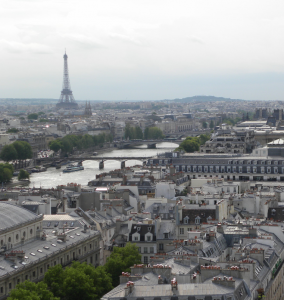 evolution the government owed a lot of money to a local businessman, so they gave him the church and he took it apart, selling the stones off to the highest bidders. Since then, the tower has inspired artists, scientists and intellectuals. Dumas wrote a story set in the park, and it is believed that Blaise Pascal used the site for his experiments with atmospheric pressure.
evolution the government owed a lot of money to a local businessman, so they gave him the church and he took it apart, selling the stones off to the highest bidders. Since then, the tower has inspired artists, scientists and intellectuals. Dumas wrote a story set in the park, and it is believed that Blaise Pascal used the site for his experiments with atmospheric pressure.

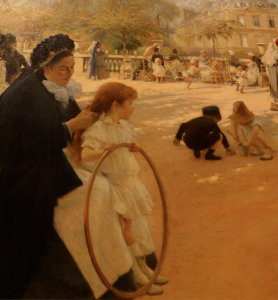 Until I reached the fashion room with illustrations of a Parisenne’s day, fans and gowns, which had me completely under its spell as I read about the Trottins. These were the young girls who would deliver hats to the haute couture clients and they were considered to be the epitome of good fashion and elegant taste, inspiring a journalist to write, “What differentiates the Parisienne from other women is a discreet elegance in every aspect of her social life; sobriety, taste, innate distinction, and the indefinable something only she possesses, that blend of bearing and modernity we call chic.”
Until I reached the fashion room with illustrations of a Parisenne’s day, fans and gowns, which had me completely under its spell as I read about the Trottins. These were the young girls who would deliver hats to the haute couture clients and they were considered to be the epitome of good fashion and elegant taste, inspiring a journalist to write, “What differentiates the Parisienne from other women is a discreet elegance in every aspect of her social life; sobriety, taste, innate distinction, and the indefinable something only she possesses, that blend of bearing and modernity we call chic.”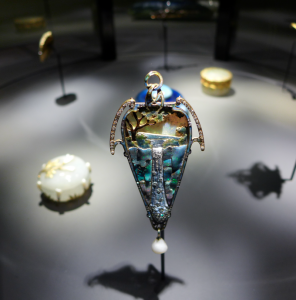 Further on, a space dedicated to the performing arts had a small theater playing the first sci-fi film ever made, Voyage to the Moon.
Further on, a space dedicated to the performing arts had a small theater playing the first sci-fi film ever made, Voyage to the Moon.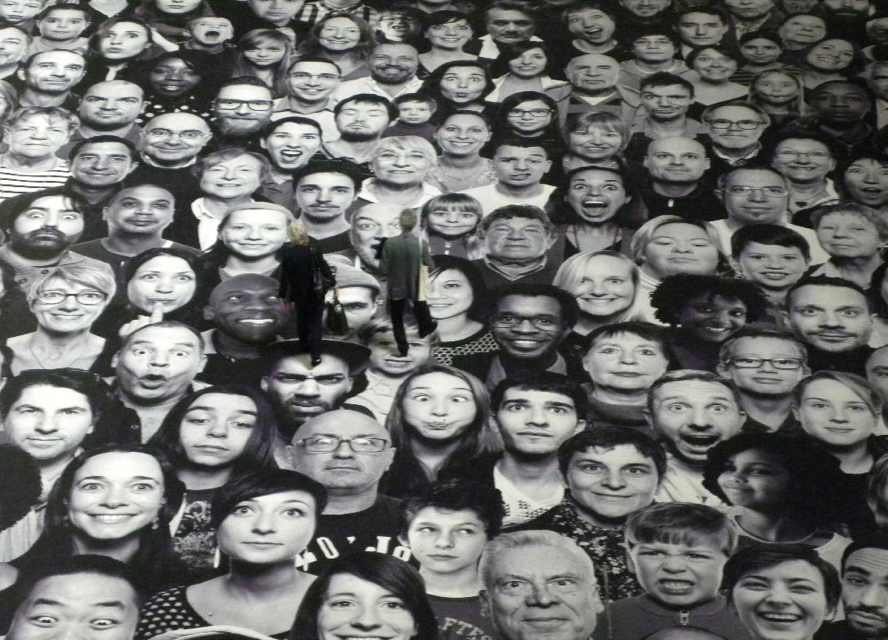 It is one of those BIG life questions, that no one has really answered. Mr French and I spend so much time exploring art that the question comes up often, especially as our tastes tend to be wildly different. Is it art? design? or just a really bad joke? Sometimes it can be hard to tell and my mind races to the tale of The Emperor’s New Clothes.
It is one of those BIG life questions, that no one has really answered. Mr French and I spend so much time exploring art that the question comes up often, especially as our tastes tend to be wildly different. Is it art? design? or just a really bad joke? Sometimes it can be hard to tell and my mind races to the tale of The Emperor’s New Clothes.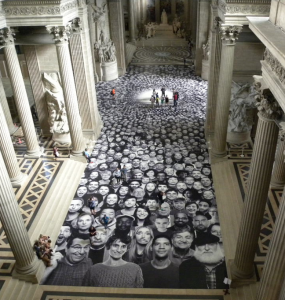 The question has been surfing the airwaves lately, questioning the legitimacy of street artist JR. The artist’s work is currently decorating the top of the Pantheon, while it under goes renovation with a monumental installation inside the memorium, until Oct 5. This isn’t the first time JR has graced the city with his astonishing photographic work.
The question has been surfing the airwaves lately, questioning the legitimacy of street artist JR. The artist’s work is currently decorating the top of the Pantheon, while it under goes renovation with a monumental installation inside the memorium, until Oct 5. This isn’t the first time JR has graced the city with his astonishing photographic work.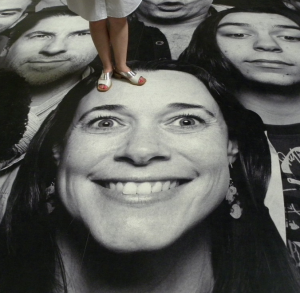 Several years ago he covered the quais and bridges on the Ile de la Cité with 10 metre long images of women’s eyes. The effect was moving, even before learning that they were the eyes of women who had witnessed great tragedy; war, famine, assassination.
Several years ago he covered the quais and bridges on the Ile de la Cité with 10 metre long images of women’s eyes. The effect was moving, even before learning that they were the eyes of women who had witnessed great tragedy; war, famine, assassination.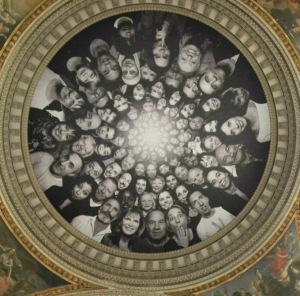 tremendous project. They are of every race, religion, color, and style with a fashion sense that runs from the prosaic to the goofy. JR has lined them up and laid them out, like a human tower of babel. They are tiered in size, starting out larger than life and rising to the size of a miniature poodle. Working in black and white has given the work an aesthetic harmony. The images are printed out on large plastic tiles, then laid out like an oriental carpet, covering the cross-shaped floor, where visitors are invited to walk. The effect is astonishing. You are walking on art. You are walking on people. And the people are gorgeous, in a wonderful, very real way.
tremendous project. They are of every race, religion, color, and style with a fashion sense that runs from the prosaic to the goofy. JR has lined them up and laid them out, like a human tower of babel. They are tiered in size, starting out larger than life and rising to the size of a miniature poodle. Working in black and white has given the work an aesthetic harmony. The images are printed out on large plastic tiles, then laid out like an oriental carpet, covering the cross-shaped floor, where visitors are invited to walk. The effect is astonishing. You are walking on art. You are walking on people. And the people are gorgeous, in a wonderful, very real way.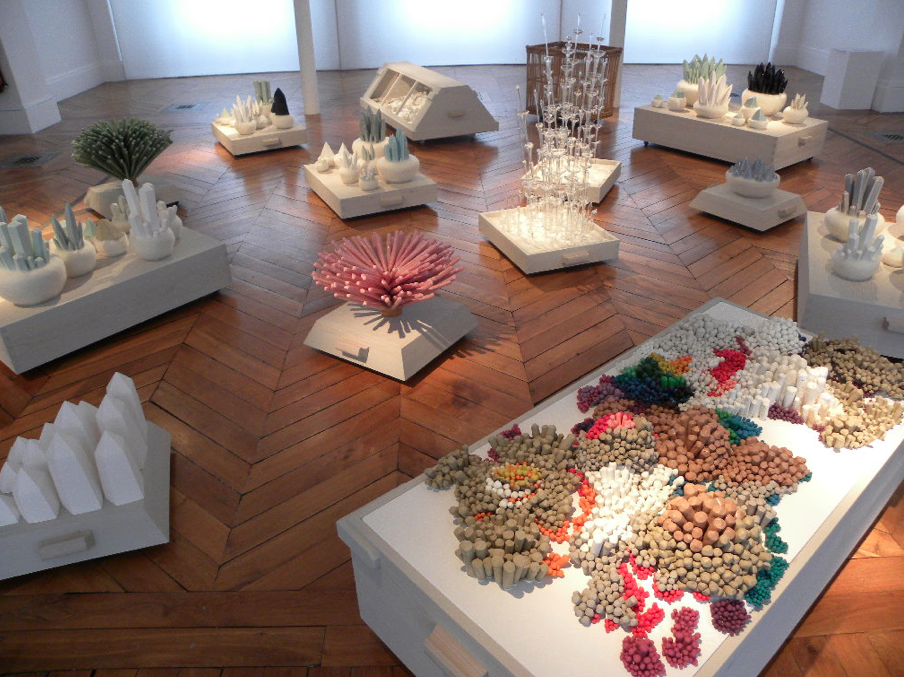
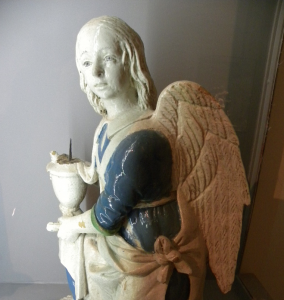

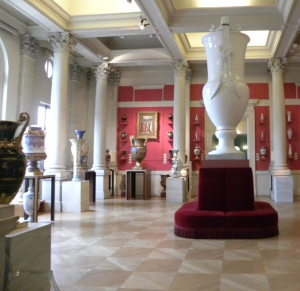
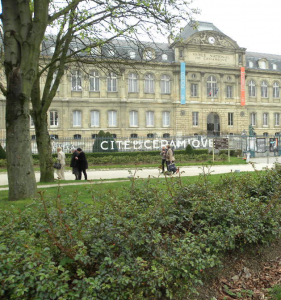 Practical information:
Practical information: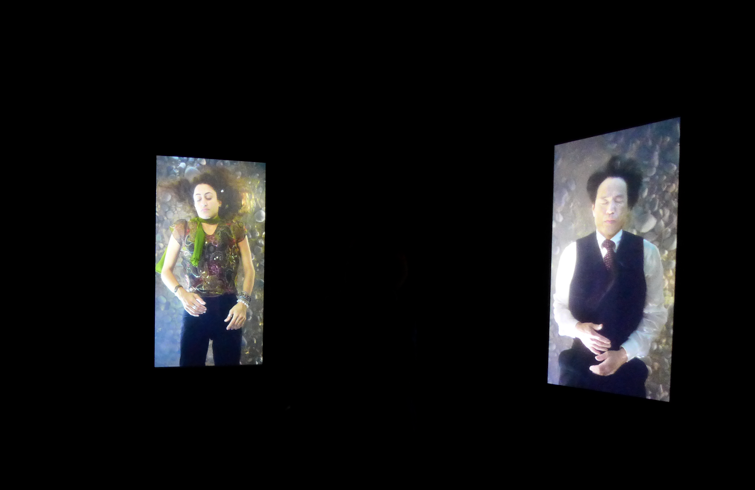
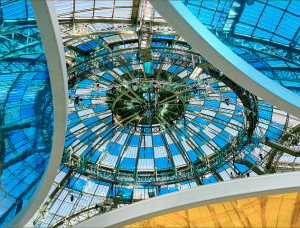
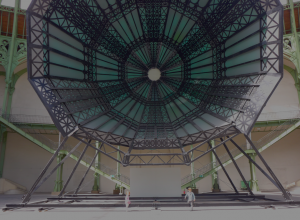 The problem with Monumenta is that it is very expensive, and it was lost to budget cuts. A very affluent Russian stepped in, offering to foot the bill for the entire show, if the state agreed to offer the prestigious role to the relatively unknown Kabakov’s. Walking in, there is a stupendous amplifier, with a design that evokes the Eiffel Tower as it projects mystical sounds. It moves those who walk past, quite literally with the vibrations of sound waves rolling through the space. The rest of the show was a complete let down, exploring themes of angels and cosmic energy, like a stroll through Haight-Ashbury without any of the charm and absolutely no respect for the monumental space.
The problem with Monumenta is that it is very expensive, and it was lost to budget cuts. A very affluent Russian stepped in, offering to foot the bill for the entire show, if the state agreed to offer the prestigious role to the relatively unknown Kabakov’s. Walking in, there is a stupendous amplifier, with a design that evokes the Eiffel Tower as it projects mystical sounds. It moves those who walk past, quite literally with the vibrations of sound waves rolling through the space. The rest of the show was a complete let down, exploring themes of angels and cosmic energy, like a stroll through Haight-Ashbury without any of the charm and absolutely no respect for the monumental space.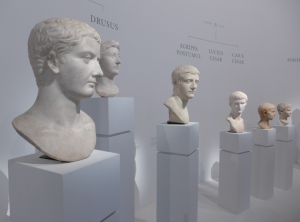

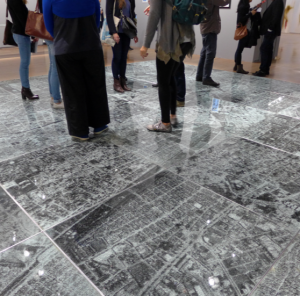 His show, which opened today at the
His show, which opened today at the 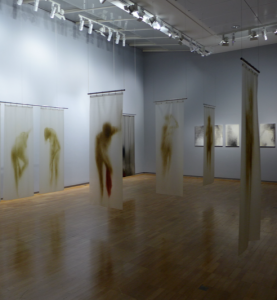 the introduction to another theme. Beyond movement, Mr Munoz’s work is awash in water. Water that cleanses, purifies, erases; his subjects shower, their images printed on hanging shower curtains. Fading images of the dead are projected onto shower floors, drains included.
the introduction to another theme. Beyond movement, Mr Munoz’s work is awash in water. Water that cleanses, purifies, erases; his subjects shower, their images printed on hanging shower curtains. Fading images of the dead are projected onto shower floors, drains included.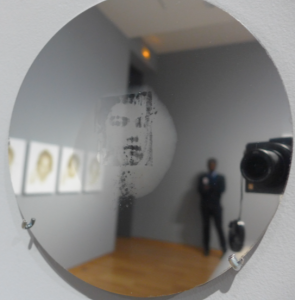 In one room, a row of metal disks line the wall. Exhale your breath onto the disk and the silhouette of an obituary photos appears, then disappears before your eyes, only to reappear again with your very next breath.
In one room, a row of metal disks line the wall. Exhale your breath onto the disk and the silhouette of an obituary photos appears, then disappears before your eyes, only to reappear again with your very next breath.